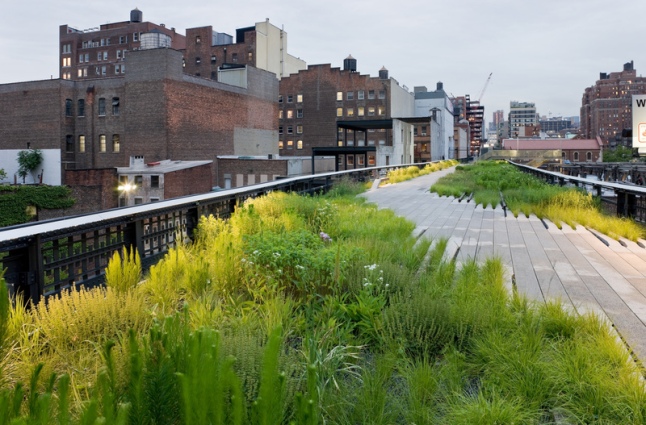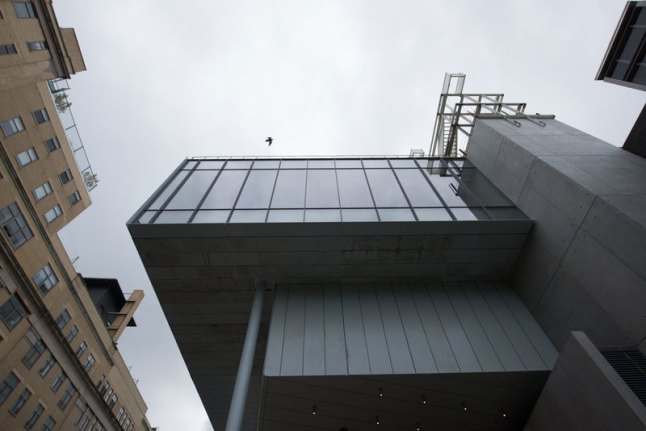Far-Reaching Contribution from Bloomberg Philanthropies for Digital Engagement, and Naming Gifts from Netflix, the Charles V. Roven Family Foundation and the Thomas Spiegel Family Foundation
Kerry Brougher, Director of the Academy Museum of Motion Pictures, today announced three major gifts toward the creation of this institution, bringing fundraising to more than $300M, nearly 80 percent of its $388M campaign goal. When it opens in 2019, the Academy Museum will be the world’s premier film museum—located in Los Angeles, the acknowledged moviemaking capital of the world.
Designed by Pritzker Prize-winning architect Renzo Piano, the Academy Museum will restore and revitalize the historic Saban Building at the corner of Wilshire Boulevard and Fairfax Avenue. The Academy Museum will feature six floors of exhibition spaces, a movie theater, education areas, special event spaces, conservation areas, and a café and store. A new spherical addition will connect to the Saban Building with glass bridges and will feature a state-of-the-art 1,000-seat theater and a rooftop terrace. The Academy is currently raising $388 million to support the building, exhibitions, and programs of the Academy Museum. The campaign was launched in 2012, headed by chair Bob Iger and co-chairs Annette Bening and Tom Hanks.

When it opens in 2019, the Academy Museum will be the world’s premier film museum—located in Los Angeles, the acknowledged moviemaking capital of the world.
Bob Iger, CEO of The Walt Disney Company and Chair of the Campaign for the Academy Museum, said, “We’re enormously grateful to Bloomberg Philanthropies, Netflix, the Charles V. Roven Family Foundation and the Thomas Spiegel Family Foundation for their generous support, and are thrilled to welcome them to a growing community of extraordinary donors who share our vision and are helping us build an Academy Museum as dynamic and vibrant as the art it celebrates.”
Bloomberg Philanthropies has provided generous funding for the development of the museum’s wide-ranging digital engagement platforms through its Bloomberg Connects program, a global initiative that helps cultural institutions innovate and engage audiences. Designed to enhance the on-site visitor experience and provide access to an off-site global audience, the digital platforms will enable the Academy Museum to inspire a deeper understanding, appreciation, and enjoyment of motion pictures.

Academy Museum Aerial Facing South
Brougher said, “The Academy Museum is going to be the permanent home for the art of film in its storied past, amazing present, and fast-evolving future. Film has always been at the forefront of technology, which is why it’s so important for us to have the digital platform that Bloomberg Philanthropies’ support is allowing us to create. For visitors to the Academy Museum, the creativity and innovation of the museum’s digital engagement will provide a unique experience only the Academy can offer.”
Netflix, the Charles V. Roven Family Foundation and the Thomas Spiegel Family Foundation have contributed gifts to name spaces within the Academy Museum’s Saban Building, designed by Renzo Piano Building Workshop. Spaces named in recognition of these gifts are the Netflix Gallery Terrace on the second floor and the Charles V. Roven Family Foundation and the Thomas Spiegel Family Foundation Terrace on the fifth floor.
Ron Meyer, Vice Chairman of NBC Universal and Chair of the newly established Board of Trustees of the Academy Museum, said, “We are fortunate to have the support of our new donors. They understand our aim of enlightening the public as no other museum can about the art, science, and history of the world’s motion pictures.” Continue reading












